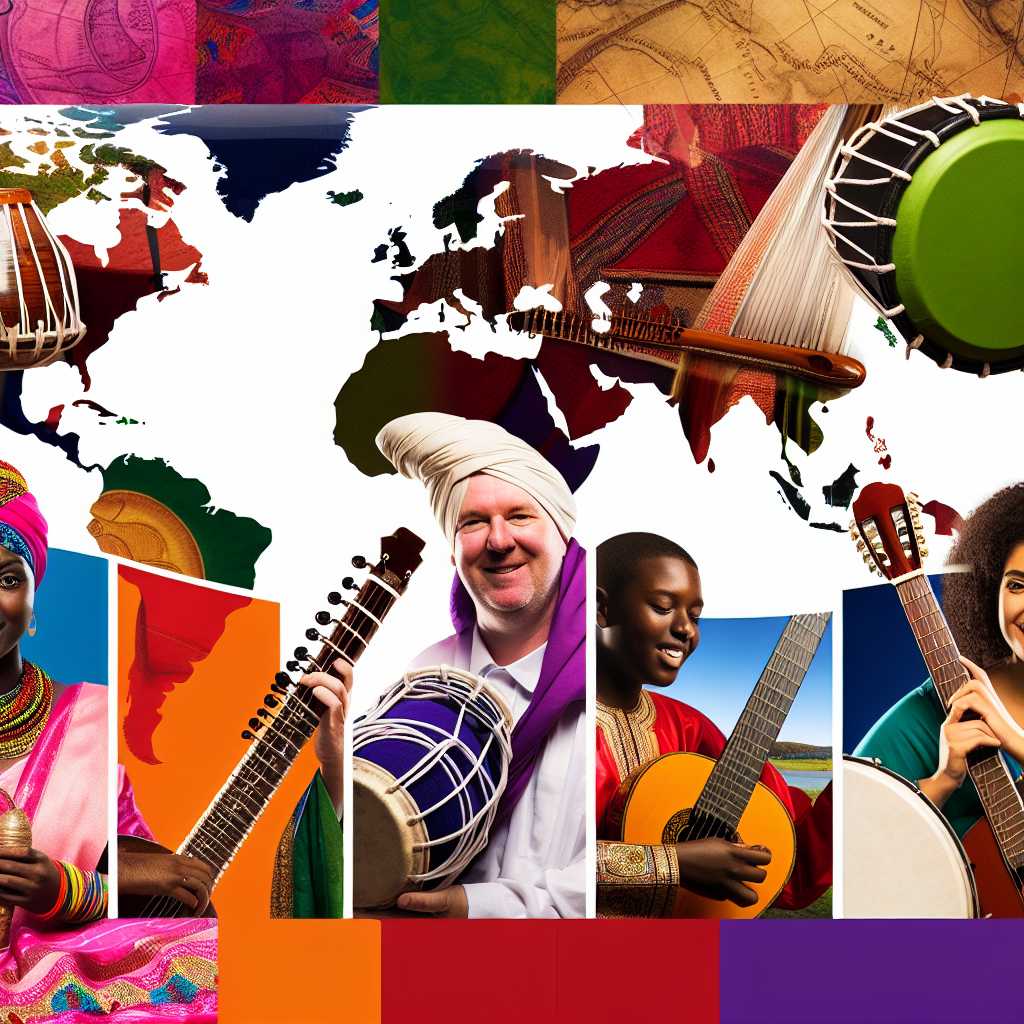In the intricate tapestry of human history, music stands as one of the most vibrant threads interwoven through our diverse global cultures. It is a universal language that transcends borders, a harmonious expression of shared emotions and experiences that unites us all.
World Music, a term coined to define the global phenomenon of traditional and contemporary musical styles from different cultures, has gained significant traction over the past few decades. It includes a wide array of genres, from the melodious sitars of India to the rhythmic drumbeats of African tribes, and the soulful strumming of Latin American guitars. This rich diversity has not only expanded the musical landscape but has also fostered cultural understanding and appreciation among people around the world.
At its core, World Music offers a window into cultural traditions, histories, and societal norms of various communities. Each beat, lyric, and chord tells a story, preserving and communicating identities across generations. For instance, the vibrant beats of Bollywood songs encapsulate the essence of Indian traditions and modern cinematic expressions, while the haunting melodies of the Irish tin whistle evoke tales of love and loss that have been passed down through centuries.
The impact of World Music extends beyond simple entertainment; it acts as a bridge between cultures, promoting peace and global unity. Engaging with these diverse musical traditions allows people to step into someone else’s world, fostering empathy and breaking down stereotypes and misconceptions. Schools and institutions around the globe are increasingly incorporating World Music into curricula to instill a sense of global citizenship in young generations.
Moreover, in today’s digital age, technology has amplified the reach of World Music, creating platforms for cross-cultural collaborations and exchanges. Artists are now able to connect instantaneously, blending styles from opposite ends of the earth to create something beautifully unprecedented. The internet has brought exotic sounds into the living rooms of people everywhere, making World Music more accessible than ever before.
World Music festivals such as WOMAD (World of Music, Arts and Dance) and events like the Fes Festival of World Sacred Music in Morocco are prime examples of how music can be used as a tool for celebration, understanding, and social change. These gatherings not only showcase a gamut of musical talents but also cultivate a sense of community that transcends language barriers.
In conclusion, World Music is much more than a genre; it is a testament to the resilience and creativity of human societies. As we explore and appreciate these musical forms, we engage in a dialogue that resonates with the hopes and dreams shared universally by humankind. Music, in its diverse splendor, truly is a bridge that brings people together from every corner of our world.
Let us continue to embrace the symphony of World Music and explore the endless possibilities it holds in connecting hearts and minds across our magnificently diverse planet.


Leave a Reply